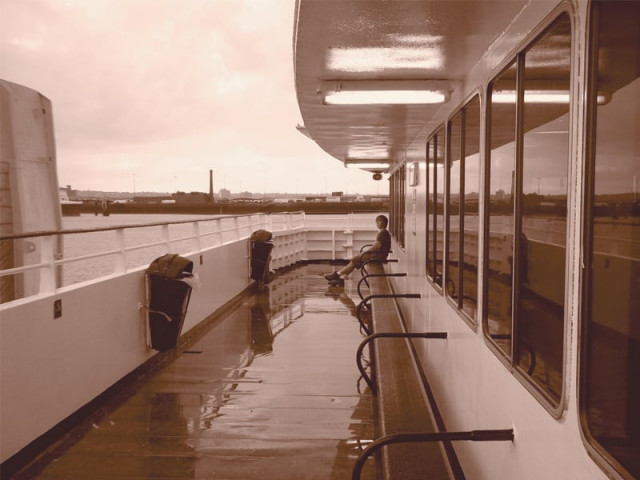Searching for Manx
The English may have taken over the Isle of Man, but the quintessential ‘Manx’ waits to be discovered.

The Isle of Man, where I was headed on that rainy day, is an independent country to the northwest of England; an island nation in the Irish Sea that boasts of unrivalled natural beauty.
The Snaefell is a reasonably comfortable ferry with a pub (a quintessential English hangout), games arcade and a cafe. My favourite part of the Snaefell, though, was its upper deck from where the vast sea and the relatively small city towards the end of it could be viewed and enjoyed. The ferry moved ahead with the thrust of its engines, riding on the splashing waves and cutting through the unruly wind. The sight was breathtaking. Far away mountains turned their faces away from the sea, as if irked. The windmills relentlessly turned in the backdrop of the blue-grey skies and larks flew in glee. The journey on the Snaefell is supposed to be three hours long. But it turns out that the Snaefell rarely keeps to its schedule, a delay that I did not mind in the least.
Interestingly, this isle of about 80,000 people boasts of the oldest uninterrupted parliamentary democracy in the world. The Lonely Planet travel guide gives an insight into the economy of the isle: “The number one industry (on the Isle) is tax avoidance — wealthy Brits can shelter their loot here without having to move to Monte Carlo or the Cayman isles.” The isle’s proximity to Britain is probably its biggest boon, but also its worst curse. Its economy is run pretty much by the wealthy Brits, and its culture is almost dead under the strong influence of the English and Scots.
Thankfully, The Manx Museum in Douglas manages to preserve a concise, yet thorough history of the isle. The Isle of Man, simply known as Mann, has its own, almost extinct, language called Manx, and the term is liberally applied to just about anything from the Isle of Man. One can listen to sound bites of a few Manx proverbs to get a feel of the dying language. Hearing those, I wondered if all languages have similar proverbs. I have certainly heard ‘help poor, help God’ in Hindi, Kannada and even English.
After a few hours of wading through artefacts at the museum, it was time to literally give myself a taste of Man. I lunched at a cozy English joint and realised that the cuisine of the isle is largely English in nature. If the isle ever had a cuisine of its own, perhaps it didn’t exist anymore.
My next stop was Castletown — a destination about a dozen kilometres away from Douglas that I reached after a drive through some of the most scenic routes. The country is not more than 24 kilometres in breadth and only about 48 kilometres in length. So, reaching another town takes less than 15 minutes. Upon reaching the town, I made my way to the historic Castle Rushen, which was the residence of all the kings of Man. It is a stunning grey castle with several tiny rooms that give a sense of the royal lifestyle of the Manx — their stately feasts and attire and their royal lineage. The stairways are confusing though, but once at the top you get a breathtaking view of the Irish Sea. The Calf of Man, the southern tip of the isle nation, is also visible from up there.
When it was time to leave the isle, I casually checked the boarding pass of the ferry. I clearly remembered having spelt out my name at the ticket counter when I bought my tickets. But the name on the boarding pass was printed ‘REKSHE’! I wondered if this was because of the ‘f-u-ni-ny’ Irish pronunciations where As sound like Es.
The three-hour return journey to Liverpool on the Snaefell was uneventful. Having arrived at my destination, I realised that England is worlds apart from the tiny isle that is geographically so close. And though the tiny isle has few tourist spots, a leisurely stay for a few days, away from the madding crowds of the mainland, would certainly be revitalising.
Published in The Express Tribune, Sunday Magazine, September 30th, 2012.
Like Express Tribune Magazine on Facebook and follow at @ETribuneMag



















COMMENTS
Comments are moderated and generally will be posted if they are on-topic and not abusive.
For more information, please see our Comments FAQ